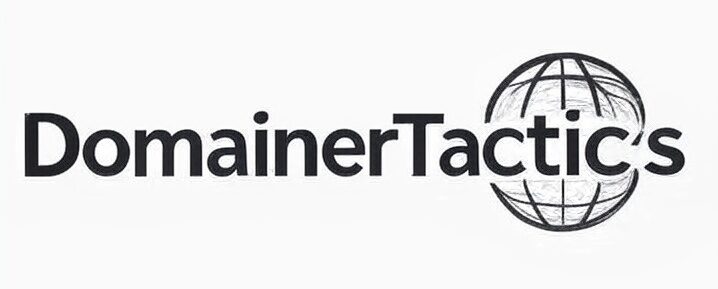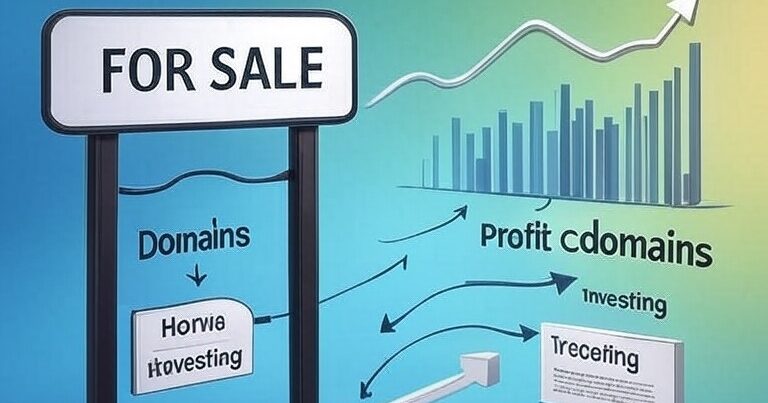domain flipping guide
Investing in online assets has become a lucrative venture, and one of the most profitable is buying and selling domain names. This practice, called domain flipping, entails purchasing domain names at a low price and reselling them for a substantial profit.. The art of domain flipping requires a deep understanding of market trends, consumer demand, and the ability to predict future digital landscapes.
For those new to this investment strategy, navigating the complex world of domain investing can be daunting. This guide is designed to walk you through the process, from identifying valuable domain names to closing profitable deals.
Key Takeaways
- Understand the basics of domain flipping and its potential for profit.
- Learn how to identify valuable domain names.
- Learn effective strategies for acquiring and reselling domain names for maximum profit.
- Gain insights into market trends and consumer demand.
- Explore the tools and resources needed for successful domain investing.
What is Domain Flipping?
For those looking to invest in the digital landscape, domain flipping offers an intriguing opportunity to buy, sell, and profit from domain names. Domain flipping is essentially a form of investment where individuals purchase domain names with the intention of selling them at a higher price later on.
The Basic Concept of Domain Investing
Domain investing involves acquiring domain names that are likely to appreciate in value over time. This can include domains with high demand keywords, those that are short and memorable, or domains related to emerging trends.
Why Domain Flipping Can Be Profitable
Domain flipping can be profitable due to the relatively low barriers to entry and the potential for high returns on investment. As Uniregistry notes, “The domain aftermarket is a multi-billion-dollar industry, with some domains selling for hundreds of thousands of dollars.” This profitability is further enhanced by the ability to buy and sell domains quickly, allowing investors to capitalize on market trends.
Understanding the Domain Marketplace
To succeed in domain flipping, one must have a deep understanding of the domain marketplace and its intricacies. The domain marketplace is a complex ecosystem where buyers, sellers, and investors engage and transact.
Key Players in the Domain Industry
The domain industry involves various key players, including domain registrars, aftermarket platforms, and individual investors. Domain registrars like GoDaddy and Namecheap allow users to register new domain names, while aftermarket platforms facilitate the buying and selling of existing domains.
Market Trends and Opportunities
Market trends significantly influence the domain marketplace. For instance, the rise of new technologies or industries can increase demand for specific domain names. Keeping abreast of these trends can help investors identify lucrative opportunities.
| Trend | Impact |
|---|---|
| Increased interest in AI | Higher demand for AI-related domains |
| Growing e-commerce | Rise in demand for .shop and .store domains |
Domain Name Extensions and Their Value
A domain name’s value is also impacted by its extension. Classic extensions such as .com and .net typically hold greater value compared to newer or specialized alternatives. However, certain niche extensions can be valuable within specific industries.
“The right domain name can be a powerful tool for businesses. It’s not just about having a web presence; it’s about having a memorable and marketable identity.” –
Domain expert
How to Find Valuable Domain Names
Finding the right domain name is essential for those looking to buy domain names and flip them for profit. A valuable domain name can significantly impact the success of a domain investing strategy.
Research Techniques for Domain Hunters
Effective domain hunting requires a combination of creativity and research. Domain hunters can use keyword research tools to identify trending topics and relevant keywords. Brainstorming sessions can also help generate a list of potential domain names.
Tools for Discovering Available Domains
Several tools are available to help discover available domains. These include:
- Domain Suggestion Tools: Tools like NameMesh and LeanDomainSearch provide suggestions based on keywords.
- Expired Domain Databases: Databases such as ExpiredDomains.net list domains that have expired and are available for registration.
Identifying Profitable Niches
Identifying profitable niches is crucial for a successful domain strategy. This involves researching market trends and understanding what types of domains are in demand. A comparative analysis of different niches can help identify the most profitable opportunities.
| Niche | Demand | Competition |
|---|---|---|
| Technology | High | High |
| Health and Wellness | High | Medium |
| Niche Markets | Medium | Low |
Evaluating Domain Name Worth
Evaluating the worth of a domain name is a crucial step in domain flipping. It requires an understanding of the key factors that influence a domain’s overall value.
Factors That Determine Domain Value
The value of a domain name is shaped by several key factors, including length, keyword relevance, extension, brandability, and market demand. These include its brandability, memorability, SEO potential, and traffic.
Brandability and Memorability
A domain name that is easy to remember and has a strong brand identity can command a higher value. Brandability refers to how well a domain name can be associated with a brand, while memorability is about how easily users can recall the domain.
SEO Potential and Traffic
The SEO potential of a domain, including its keyword relevance and backlink profile, significantly impacts its value. Additionally, domains with existing traffic are more valuable due to their potential for immediate monetization.
Domain Appraisal Tools and Services
Utilizing domain appraisal tools and services can provide an accurate estimate of a domain’s value. These tools analyze various metrics, including historical sales data and current market trends.
Recent Sales Data Analysis
Analyzing recent sales data of similar domains helps in understanding the current market value. This data is crucial for both buyers and sellers in making informed decisions.
By considering these factors and using domain appraisal tools, investors can effectively evaluate domain names and make profitable decisions.
Where to Buy Domains for Flipping
To succeed in domain flipping, you need to know where to buy valuable domain names. The domain marketplace offers various platforms and methods for acquiring domains, each with its advantages and considerations.
Domain Registrars vs. Aftermarket Platforms
Domain registrars like GoDaddy, Namecheap, and Google Domains allow you to register available domain names directly. Aftermarket platforms, such as Sedo, Uniregistry, and Flippa, offer a broader range of already registered domains for sale. While registrars are ideal for finding new, unregistered names, aftermarket platforms provide access to a vast pool of pre-existing domains that may have higher value due to their age, traffic, or keyword relevance.
Navigating Domain Auctions
Domain auctions are another avenue for acquiring valuable domains. Platforms like NameJet and SnapNames host auctions for expired or premium domains. To navigate these auctions successfully, it’s essential to research the domain’s history, assess its value, and set a realistic budget.
Private Domain Acquisitions
Private domain acquisitions involve buying domains directly from owners, often through negotiation. This method can be more challenging but may yield unique opportunities to acquire high-value domains.
Budget Considerations for Beginners
For those new to domain flipping, it’s crucial to set a budget and stick to it. Start with affordable options and gradually move to more expensive domains as you gain experience and build your portfolio.
Profitable Domain Flipping Strategies
Profitable domain flipping requires a combination of market insight, strategic planning, and timely execution. Investors must navigate the complex domain marketplace to identify opportunities and mitigate risks.
Short-Term vs. Long-Term Domain Investing
Domain investors can adopt either short-term or long-term strategies. Short-term investing involves buying and selling domains quickly to capitalize on market trends. In contrast, long-term investing focuses on holding valuable domains for extended periods, allowing them to appreciate in value.
Short-term strategies are ideal for those who can closely monitor market fluctuations and are comfortable with the possibility of rapid changes in domain value. Long-term strategies, however, are better suited for investors who can afford to hold onto domains for years, waiting for the right buyer.
Domain Development and Monetization
Developing and monetizing domains can significantly enhance their value. This can be achieved by creating websites, blogs, or e-commerce platforms on the domains and generating revenue through advertising, affiliate marketing, or sales.
Effective domain development involves understanding the target audience and creating content that resonates with them. Monetization strategies should be aligned with the domain’s niche and potential for attracting traffic.
Portfolio Management Techniques
Managing a domain portfolio effectively is crucial for maximizing returns. This involves regularly reviewing the portfolio to identify underperforming domains, rebalancing investments, and diversifying across different niches and domain types.
Investors should also consider implementing a diversification strategy to spread risk across various domains, reducing dependence on a single asset. Regular portfolio rebalancing helps in maintaining an optimal investment mix.
Risk Mitigation Approaches
Domain flipping involves several risks, including market volatility, domain devaluation, and security threats. To mitigate these risks, investors can adopt strategies such as domain insurance, secure domain transfer practices, and staying informed about market trends.
Understanding the legal and regulatory environment surrounding domain ownership is also crucial. Investors should be aware of potential disputes and the processes for resolving them.
How to Sell Domains Successfully
The art of selling domains involves more than just listing them for sale; it requires a strategic approach. To maximize profits, domain sellers must understand how to present their domains attractively, choose the right platforms to reach potential buyers, and negotiate effectively.
Creating Compelling Domain Listings
A well-crafted domain listing is crucial for attracting potential buyers. This involves providing a clear and concise description of the domain, including its value proposition, relevant keywords, and potential uses. Highlighting the domain’s unique features and any associated branding opportunities can significantly enhance its appeal.
Choosing the Right Selling Platforms
The domain marketplace offers various platforms for selling domains, including auction sites, brokerages, and private sales. Selecting the right platform depends on the domain’s value, niche, and target audience. Popular options include Sedo, Uniregistry, and GoDaddy Auctions.
| Platform | Fees | Target Audience |
|---|---|---|
| Sedo | Variable | Global domain investors |
| Uniregistry | Commission-based | High-end domain buyers |
| GoDaddy Auctions | Listing fees + commission | Wide range of domain buyers |
Negotiation Tactics for Domain Sales
Effective negotiation is key to closing domain sales. This involves being flexible on pricing, understanding the buyer’s needs, and being prepared to walk away if necessary. Building rapport with potential buyers can also facilitate successful negotiations.
Transfer and Payment Security
Ensuring secure transfer and payment processes is critical to completing domain sales. Using escrow services like Escrow.com or PayPal for payments can protect both buyers and sellers from fraud. It’s also essential to follow the domain registry’s transfer procedures carefully.
Conclusion: Is Domain Flipping Right for You?
Domain flipping can be a lucrative investment strategy for those willing to put in the time and effort to research and understand the domain marketplace. By identifying valuable domain names, evaluating their worth, and selling them at a profit, investors can capitalize on the growing demand for online presence.
To succeed in domain flipping, it’s essential to consider your financial goals, risk tolerance, and investment horizon. With the right approach and a thorough understanding of the domain industry, you can make informed decisions and potentially achieve significant returns on your investment.
As you consider domain flipping as an investment strategy, remember to stay up-to-date with market trends and opportunities. By doing so, you’ll be better equipped to navigate the domain marketplace and make the most of your domain investing endeavors, ultimately reaching a successful conclusion to your investment journey.
FAQ
What is domain flipping, and how does it work?
Domain flipping involves buying domain names at a low price and selling them at a higher price, often without developing the domains into full websites. It works by identifying undervalued or in-demand domain names, purchasing them, and then listing them for sale on various marketplaces or to interested buyers directly.
How do I determine the value of a domain name?
The value of a domain name is determined by factors such as its brandability, memorability, SEO potential, traffic, and recent sales data of similar domains. Using domain appraisal tools and services can also help estimate a domain’s worth.
Where can I buy domain names for flipping?
You can buy domain names for flipping through domain registrars, aftermarket platforms, domain auctions, and private domain acquisitions. Each method has its advantages, and the best choice depends on your budget, the type of domain you’re looking for, and your investment strategy.
What are some effective strategies for domain flipping?
Effective domain flipping strategies include short-term and long-term investing, domain development and monetization, portfolio management, and risk mitigation. Understanding market trends and being able to identify profitable niches are also crucial.
How do I sell domains successfully?
To sell domains successfully, you need to create compelling domain listings, choose the right selling platforms, and employ effective negotiation tactics. Ensuring secure transfer and payment processes is also vital to closing deals efficiently.
What are the risks involved in domain flipping?
Risks in domain flipping include market volatility, the potential for domains to be devalued or become obsolete, and the challenge of selling domains quickly or at a desired price. Mitigating these risks involves diversifying your portfolio, staying informed about market trends, and having a clear investment strategy.
Can I start domain flipping with a limited budget?
Yes, you can start domain flipping with a limited budget. It’s essential to be strategic about which domains you buy, focusing on those that are likely to appreciate in value or are in demand. Budget considerations should also guide your choice between domain registrars, aftermarket platforms, and other acquisition methods.
How do I stay updated on market trends in domain flipping?
Staying updated on market trends involves following industry news, participating in domain forums and communities, and using tools that track domain sales and market activity. This helps you identify emerging trends and opportunities in the domain marketplace.


